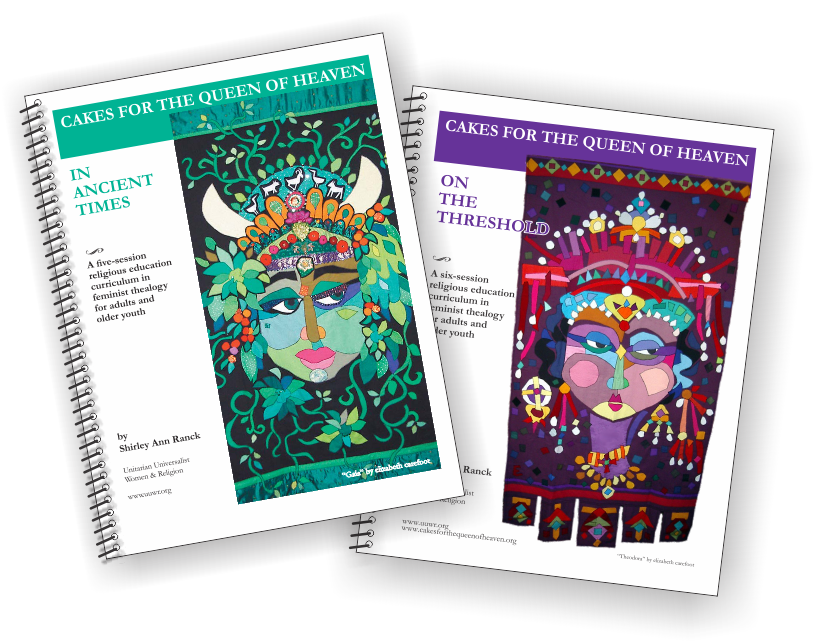A LIFE OF GREATNESS:
Margaret Fuller’s Life and Work
Rev. Dr. Dorothy May Emerson
Conversation at Arlington Street Church
Boston, Massachusetts, November 7, 2010
Barry Andrews, editor of The Spirit Leads, a new book of Margaret Fuller’s writings, describes her as a “religious radical, avant-garde cultural critic, feminist, progressive social theorist, investigative journalist, war correspondent [and] public intellectual” —and he left out public educator, which I think was one of her most important roles. Any one or two of these roles would have made her an important person.
But she did all this in a short life of only 40 years, in a society where women had almost no rights, where her access to education—and even to libraries—was limited, and where she had to struggle with difficult economic circumstances.
On the plus side, she was born a Unitarian in Cambridge, Massachusetts, into an educated but not wealthy family. The house at 71 Cherry Street, where she was born and lived for the first 16 years of her life, still stands and now serves the community as the Margaret Fuller Neighborhood House. Later the family moved to a more upscale neighborhood close to Harvard College.
Her father, Timothy Fuller, was a lawyer. In those days, girls did not receive much education beyond basic reading just enough science to be able to teach their children, but Timothy saw that his daughter had real ability and guided her in a strict classical education. By the time Margaret was 3-1/2 years old, he was teaching her how to read and write; at 4-1/2 he taught her arithmetic; just before the age of 5, she learned English and Latin grammar.
Her mother, Margarett Crane Fuller, taught her daughter to appreciate the beauty of nature. As a young girl, Margaret loved walking in the gardens her mother created around her house in Cambridge. She later wrote about how happy she was to be among the flowers.
In terms of her education, she was mostly taught by her father, with a few periods here and there of attendance at various schools. When she was 9, and again as a teenager, she went to the Port School in Cambridge. This school prepared boys for Harvard but also allowed girls to attend, quite rare for those days. When she was 11, she attended Dr. Park’s Boston Lyceum for Young Ladies on Mount Vernon Street, where she studied Italian, French, and geography, and took dancing lessons. At first she walked to school from Cambridge. Then she lived for awhile with the Whittier family at fashionable Central Court.
When she was 14, the Fullers sent Margaret for a brief time to Susan Prescott’s more traditional Young Ladies’ Seminary in Groton, because they were worried their daughter was so smart and spoke her mind so forcefully that she might be “unmarriageable.”
During much of this time her father was in Washington DC, serving in the US Congress. However, he monitored her studies via letters he and Margaret exchanged almost daily. After her often negative experiences in the various schools, at the age of 15 and with her father’s assistance, Margaret Fuller created her own course of self-study. Fortunately her family had an extensive library for the time, with all the classics as well as some of the newer writings from Europe, and she set forth to read practically everything.
While still a teenager, Margaret became friends with a group of young Harvard students, many of whom were preparing for ministry in the Unitarian church. German philosophy, literature, and poetry were the “craze.” Margaret borrowed books from them and engaged them in intense discussions of what they were reading. Among these friends were two whose Bicentennial is also this year—James Freeman Clarke and William Henry Channing.
When Margaret was in her 20s her family moved to a farm in Groton. (The beautiful house they lived in is now a private residence, with much of the historical detail still intact.) Moving to the country was her father’s idea, and as an unmarried woman, she was required to go along. She hated the isolation and resented having to leave her friends, but she came to appreciate what she learned in those years and called that period of her life her “graduate school.”
The isolation gave her time to focus on her reading and study. This is where she immersed herself in the German romantics and began translating Goethe and writing his biography, which she never completed. She began also writing essays for publication and was first paid as a teacher of children other than her family. Teaching and writing became her dual career.
While in Groton, Margaret was invited to Concord to visit Ralph Waldo Emerson and became involved in the circle of mostly men who were developing the ideas of transcendentalism. Later they asked her to be the first editor of their journal, The Dial, which helped shape perhaps the first purely American literary and philosophical movement.
While they were in Groton, Margaret’s father died suddenly of cholera. This is when her financial problems started. For the rest of her life, she had to struggle to support herself and help her family. This was no easy task for a woman in the first half of the 19th century.
Thus it was out of necessity that she began her career as an educator. She taught at Bronson Alcott’s Temple School in Boston and at Greene Street School in Providence, Rhode Island. While in Providence, she also began educational programs for adults, primarily women.
When she returned to Boston in her late 20s, she began two projects that would cement her reputation as a thought leader. She launched her first series of Conversations, and she edited the first three volumes of the Transcendentalist journal, the Dial, for which she also wrote many articles. At first she wrote commentary on other authors and ideas, and then on the art and music she experienced in Boston. Before long, though, she turned to writing about what she experienced most directly in her life—the inferior status of women.
The Conversations began in 1839 and continued through 1844. She invited women in her wide network to participate and encouraged them to invite their friends. They each paid a fee for participation, thus enabling Margaret to support herself and help her family. Each series had a different theme, and as time went on these themes became increasingly political.
At each meeting, she began with a presentation on subjects such as art, history, mythology, literature, or nature, followed by discussions and debates. The goal was to encourage women to consider "great questions" like: "What were we born to do? How shall we do it?”
Many notable women attended these Conversations, including Lidian Emerson (Waldo’s wife), Sarah Alden Bradford Ripley, Lydia Maria Child, Eliza Farrar, Elizabeth, Mary, and Sophia Peabody—to name just a few. The Conversations are considered a major contribution to the development of organized American feminism, as many of the participants went on to become leaders in the emerging women’s suffrage movement.
In 1843, she was invited by James Freeman Clarke and his sister Sarah to travel to the Great Lakes. This trip brought her into contact with the difficulties of frontier life for the immigrants there and with the devastation westward expansion had on indigenous peoples. Originally planning to write a travel journal, her book Summer on the Lakes became more of a critique of life in what was then understood by those on the east coast as “the west.”
This book and her Dial essay on gender equality caught the attention of Universalist Horace Greeley, publisher of the New-York Daily Tribune. He offered her two opportunities that widened her influence considerably. He invited her to write a front-page column for his widely read newspaper and he encouraged her to expand her work on gender equality into a book.
So in 1844, at the age of 34, she went to a friend’s country home on the Hudson River and expanded her essay into the book that made her famous, Woman in the Nineteenth Century. This small volume ignited the emerging women’s suffrage movement and made her a major spokesperson for women’s rights.
She spent the next 18 months in New York City, writing her columns of literary and arts criticism and social commentary. As in Boston, she continued to meet and engage with the leading authors and public speakers of the day.
When she finally had the opportunity to make her long dreamed of trip to Europe, she continued in her role of journalist, becoming one of the first foreign correspondents, awakening the consciousness of America concerning developments in Europe. She began in England and Scotland, then went to France, and then to Italy, where she became an active participant in the revolution of 1848.
Both in New York and in Europe, she wrote prophetically about the implications of economics as formative for social values and relationships. Her goal was to encourage and inspire the establishment of what she understood as true democracy, which would enable every person to develop their gifts and become contributing members of society.
While in Italy, she fell in love with a nobleman, the Marchese Giovanni Angelo Ossoli and gave birth to their child “Nino.” It is unclear whether or not they actually married, but given the political situation and the fact that she was not Catholic, it is unlikely they could have found a priest to marry them. Apparently they did find a priest to baptize the child.
When the Roman Revolution failed, Margaret and her family fled to Florence. In 1850, they decided to return to the United States. Short on funds, they booked passage on a freighter, essentially a sailboat. It went aground on a reef in sight of the Fire Island (New York) shore and all three drowned, along with the manuscript of the book Margaret had been writing, an eye-witness account of the revolution.
Despite her tragic death, Margaret Fuller remained one of the most influential and best known women in America well into the beginning of the 20th century. In her amazing life, she wrote and published four books, and nearly 350 articles, poems, and essays. Now another century later, she is coming back into prominence through this Bicentennial.
For more information, please visit https://uuwr.org/resources/mfb.


